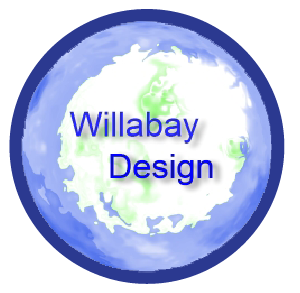Remote Portal Setup Page
Basic Instructions – How to Get Your Remote Portal Database Started
After the purchase of Willabay Design’s EDA Software for the EDMS System, a new customer will need to set up their remote portal so that they can view their environmental data and manage their EDMS system.
- The customers Remote Portal includes a database that holds the customer’s sensor data and is not made available to anyone else for any purpose.
- Customers who are setting up their first system can now secure a Customer Account Code and set up their database in one simple step.
These steps should be completed after the customer purchases at least one EDA software license but before they attempt to install the software on their Tibbo device.
- If a customer eventually intends to set up a network with multiple EDMS systems, it is only necessary to purchase one EDA license before executing the steps below.
- If a customer is simply expanding an existing EDMS network by adding a new System with new EDA’s, use Step 2 to add your new System.
- For additional information about EDMS Systems, see the Details below these instructions.
If a customer does not set up their Remote Portal environment before they attempt to start up their EDA, the EDA will not be able to report its data to the target server.
If necessary, Willabay Design can manually set up a customer’s database very quickly if contacted at support@willabaydesign.com.
Step 1 – Request a Remote Portal Customer Code
For this step, make sure you have the 8 character license code that was received by email when they purchased their EDA license.
- Execute the Customer Code Request and Database Setup form shown below:
- WD EDMS Customer Code Request Form
- This form requires a name for the set of host devices that the customer will be assigning as EDAs. Each of these collections is called an EDMS System and will need to be identified on the form. See below for more information.
- Customer’s can now use an existing Willabay Design shared database for their Remote Portal. Use of this internal database option is free of charge. This is the recommended approach for new customers.
Step 1 Alternative – For Customers using a private MySQL based database
This step is only necessary if a customer is setting up their first system using their own MySQL database. The same form is used for subsequent systems. This option is not yet available.
- Execute the Database Setup form shown below:
- WD EDMS Private Database Setup Form
- The above form will require the information that was obtained from Step 1.
Step 2 – Installing a new System on your Existing Remote Portal Database
When a customer needs to add a new system to their Willabay Design shared database, this step needs to be followed to add the System.
- If a customer will only have one system with multiple hosts (EDA devices) assigned to that System, it is not necessary to execute this step.
- For those who are adding a system, use this form:
- WD EDMS System Setup Form
- The above form will require the information that was obtained from Step 1.
Installing your new EDA software on a Tibbo device
Customers can now install the software on their Tibbo device and set it up using your Customer Code and System Number that was obtained via the above steps. Note that the System Name on the EDA Configuration Settings page must have “WD” in front of the System Number described above.
- Refer to our EDMS Setup Guide V4 and the EDMS Order Page for further details.
Additional forms are available for use in maintaining a customer database. These forms are described in detail on their own EDMS Accessory Forms Instruction Page. If you have any problems with this process, please contact us at support@willabaydesign.com.

